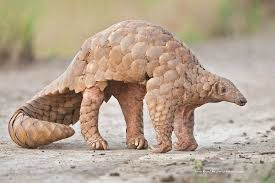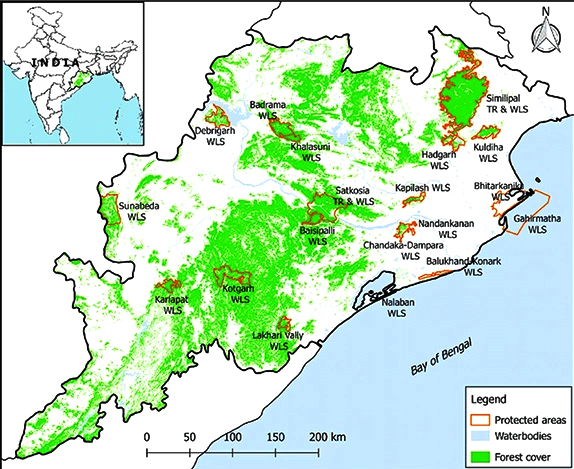Important Facts For Prelims
Indian Pangolin
- 31 Dec 2021
- 4 min read
Why in News
Recently a radio-tagged Indian pangolin was released into the wild in Nandankanan Zoological Park (Odisha) following soft release protocols and provision for post-release monitoring.
- Radio-tagging involves attaching a transmitter to an animal to monitor its movements. Several wild animals — tigers, leopards and migratory birds — have been tagged over decades.
Key Points
- About:

- Pangolins are scaly anteater mammals and they have large, protective keratin scales covering their skin. They are the only known mammals with this feature.
- It uses these scales as armour to defend itself against predators by rolling into a ball when threatened.
- Diet:
- Insectivore- Pangolins are nocturnal, and their diet consists of mainly ants and termites, which they capture using their long tongues.
- Types:
- Out of the eight species of pangolin, the Indian Pangolin (Manis crassicaudata) and the Chinese Pangolin (Manis pentadactyla) are found in India.
- Difference:
- Indian Pangolin is a large anteater covered by 11-13 rows of scales on the back.
- A terminal scale is also present on the lower side of the tail of the Indian Pangolin, which is absent in the Chinese Pangolin.
- Habitat:
- Indian Pangolin:
- It is widely distributed in India, except the arid region, high Himalayas and the North-East.
- The species is also found in Bangladesh, Pakistan, Nepal and Sri Lanka.
- Chinese Pangolin:
- It is found in the Himalayan foothills in Eastern Nepal, Bhutan, Northern India, North-East Bangladesh and through Southern China.
- Indian Pangolin:
- Threats to Pangolins in India:
- Hunting and poaching for local consumptive use (e.g. as a protein source and traditional medicine) and international trade for its meat and scales in East and South East Asian countries, particularly China and Vietnam.
- They are believed to be the world’s most trafficked mammal.
- Conservation Status:
- Wildlife Protection Act, 1972: Schedule I
- IUCN Red List: Endangered
- Chinese Pangolin is ‘critically endangered’
- CITES: Appendix I
Nandankanan Zoological Park
- It is 15 kms from Odisha's capital, Bhubaneswar. It was inaugurated in 1960.
- First zoo in the country to become a member of the World Association of Zoos & Aquariums (WAZA).
- WAZA is the global alliance of regional associations, national federations, zoos and aquariums, dedicated to the care and conservation of animals and their habitats around the world.
- It is recognized as a leading zoo for the breeding of the Indian pangolin and white tiger.
- Leopards, mouse deer, lions, rats and vultures are also bred here.
- It was the world’s first captive crocodile breeding centre, where gharials were bred in captivity in 1980.
- The State Botanical Garden of Nandankanan is one of the pioneering plant conservation and nature education centres of Odisha.







